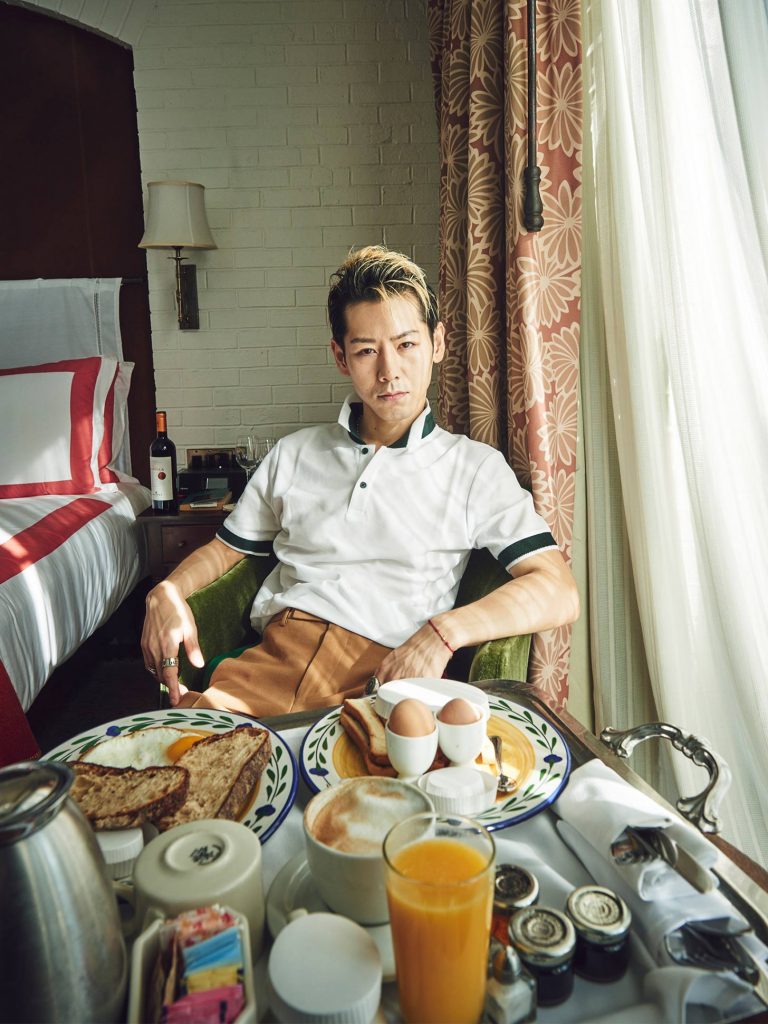
in Art
Herring & Herring
"You can’t take yourself too seriously in music or in any art really."

in Art
"You can’t take yourself too seriously in music or in any art really."

in Sport
"As long as you’re at the top, you keep asking yourself, "how can I stay here?""
Takeru Kobayashi is the world’s greatest competitive eater whose career has been built on numbers and speed. This includes 110 hot dogs, 62 slices of pizza, 159 tacos, 337 chicken wings, 57 cow brains, 93 hamburgers and counting. As he nears his 40th birthday, we visit the reigning champion in New York to talk competition and his insatiable appetite for the game.


Takeru Kobayashi exudes the self-effacing charm of a male ingenue- young, softly spoken and impeccably mannered. Within the few moments of our meeting, he has shyly tucked himself away in the nearest available space waiting patiently for our direction. It is an early September morning, and every space in our hotel suite is taken with lighting and camera equipment. Kobayashi's wife and manager Maggie, a feisty redhead with a playful wit serves as interpreter. "When Kobi stepped into the spotlight, he was a completely new breed," says Maggie. "All of us were like, “who’s this new kid?”". Back in 2001, Kobayashi exploded onto the Japanese competitive eating scene when he wolfed down 50 hotdogs in 12 minutes. "He was like this young, fit kid wearing Comme des Garçons,"continues Maggie, "not only was he new, quiet and kind of shy, but he was also super serious. They would call him Prince Kobayashi because he was the only cute guy on the show." The innocuous boyishness and informal amiability of Kobayashi belies the fierce hidden energies of an indomitable tour de force. Part of his attraction is the way he faces a crowd, armed with a theatrical arrogance he presents a defiant display as he struts and flexes onstage, his hair dyed in eccentric shocks of colour. In a career spanning two decades, the petite Japanese icon has been no stranger to controversy, famously riling up the ire of other household names in the competition. Equal parts inspiration and oddity, the bad boy of competitive eating shares the value of determination and passion in the pursuit of glory.
People were like, "what?! He’s fit! He’s tiny!"
Takeru Kobayashi
Takeru Kobayashi: It was a complete coincidence. I was a 23 year old college student and I went to a restaurant that was hosting a food challenge with a couple of friends. Nobody managed to finish except me.After, one of my friends sent a letter to a Japanese TV network, and they asked me to be on their show. It was the most popular shows at that time in Japan, and it was my first time competing continuously at a venue. It was then I realised I was able to eat more than other people, and I realised there was more training involved in competitive eating.
TK: When I arrived, I realised Americans thought that being large and obese was a strong point. But Japanese people in general, believe that if you were fat, you could not eat a lot. If you were obese, you would have a lot of fat lining your stomach and it’s not going to help you eat much. In Asia we’ve always had competitive eating, but we would always look at it as more of a scientific sport. In America, the view was a bit different. In Western culture, it was seen as something that a fat man could do as an extension of being able to eat a lot on a normal day. So the mentality was a complete 180 degree difference. There were American competitors that would say, "hey boy, your two thighs are the size of my arm", or "hey teenager, you think you’re allowed on this big man’s stage?". People were like, ‘what?! He’s fit! He’s tiny!’
TK: There are two huge factors, the flexibility and the strength of your stomach muscles. Strength is something you can only achieve through training. When you have such a volume of food going in at such a speed, you have to have the strength to be able to overcome that kind of pain. For a normal person that hasn’t trained, the pain would be too much. Also, your jaw has to be able to keep up the speed, your throat muscles have to be able to work continually and of course your tongue. When you eat, your tongue flaps towards the back of your mouth but, when you’re eating at speed you’re using your tongue more as a scooper, to throw things back into your throat. That movement only comes with practice.
TK: If you put a large person on stage without any training, I would just think that they’re an amateur. What I do in my life is separate from normal eating. It is a completely different kind of eating and needs a different kind of preparation than just being able to eat a lot as a large person. It has nothing to do with being able to eat a lot on a normal basis. It’s not only about the size of your stomach. It’s also about flexibility among other things.